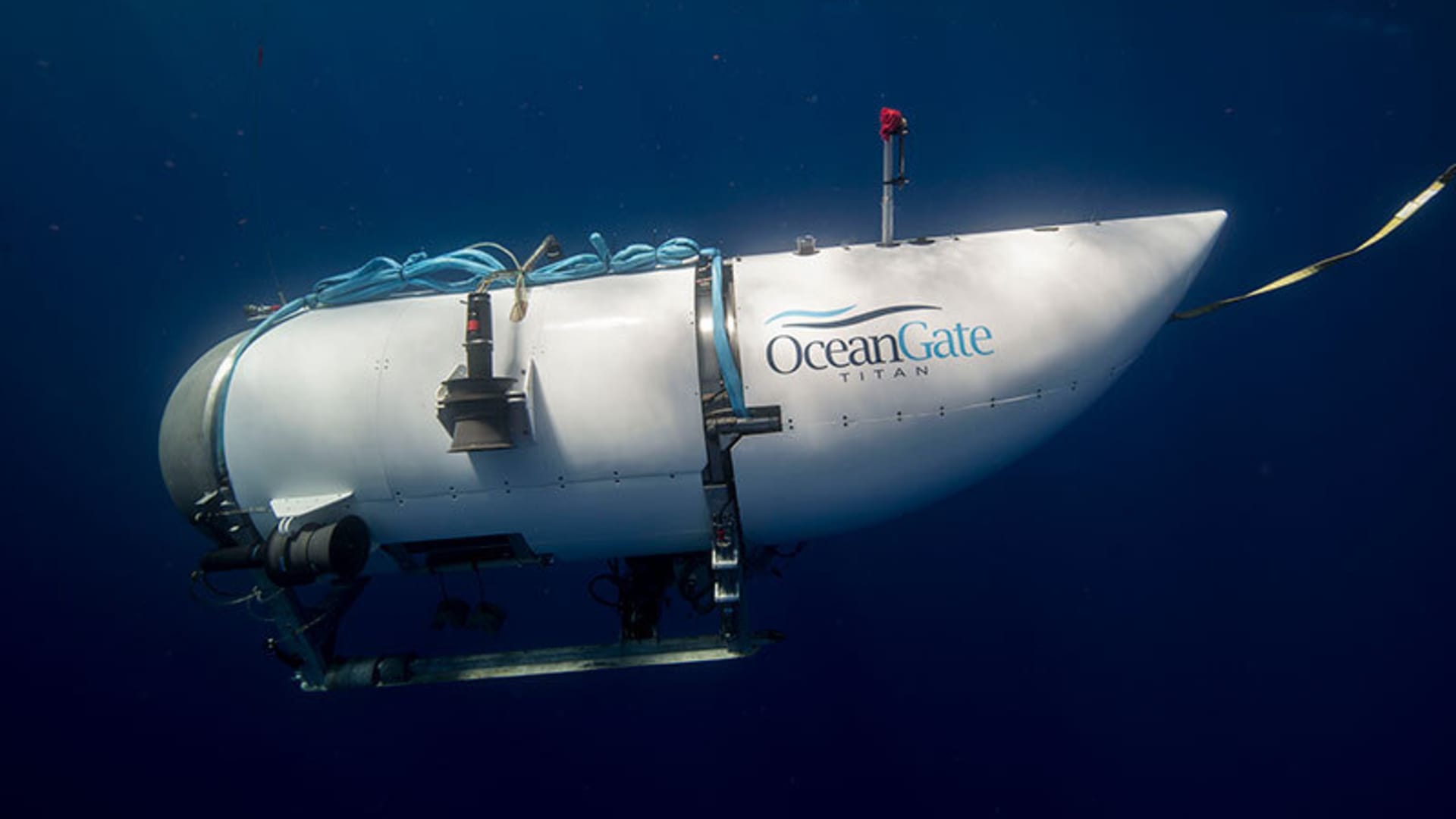An undated photo shows the tourist submersible belonging to OceanGate beginning its descent in the sea. The U.S. Coast Guard continues a search and rescue operation in Boston after a tourist submarine en route to the wreck of the Titanic went missing off Canada’s southeastern coast.
Ocean Gate | Anadolu Agency | Getty Images
The U.S. Coast Guard said a Canadian plane detected underwater noise while searching for a submersible that disappeared while taking five people to the wreck of the Titanic.
The search has been diverted due to the noise detected by the Canadian P-3 aircraft. These searches turned up nothing, but continued.
Rescuers have been racing against time as the ship could run out of oxygen by Thursday morning, even under the best of circumstances.
In addition to a series of international ships and aircraft, an underwater robot has begun a search near the Titanic, and there is a push to bring salvage equipment to the site in case the sub is found.
Three U.S. military C-17 transport planes have been used to transport commercial submersibles and support equipment from Buffalo, New York, to St. John’s, Newfoundland, to assist in the search, a spokesman for Air Mobility Command said.
The Canadian military said it provided a patrol aircraft and two surface ships, including one dedicated to diving medicine. It also dropped sonobuoys to listen for any sounds coming from Titan.
Authorities reported the carbon-fiber boat was overdue Sunday night and began a search in waters about 435 miles (700 kilometers) south of St. John’s. At the helm is navigator Stockton Rush, CEO of the company leading the expedition. His passengers were a British adventurer, two Pakistani business family members and a Titanic expert.
The submersible had a four-day supply of oxygen when it set out to sea around 6 a.m. on Sunday, according to David Concannon, a consultant with OceanGate Expeditions who oversaw the mission.
CBS News correspondent David Pogue, who traveled aboard the Titanic last year, said the ship used two communication systems: text messages sent back and forth to surface ships and a safety pulsing signal every 15 minutes to signal that the sub still working.
Both systems stopped approximately 1 hour and 45 minutes after Titan submerged.
“There’s only two things that could mean. Either they lost all power, or the ship had a hull rupture and imploded immediately. Both scenarios are pretty hopeless,” Pogue told Canada’s CBC Network on Tuesday.
The submersible has seven back-up systems for returning to the surface, including sandbags and dropped lead pipes, and an inflatable balloon. A system could work even if everyone on board was unconscious, Pogue said.


